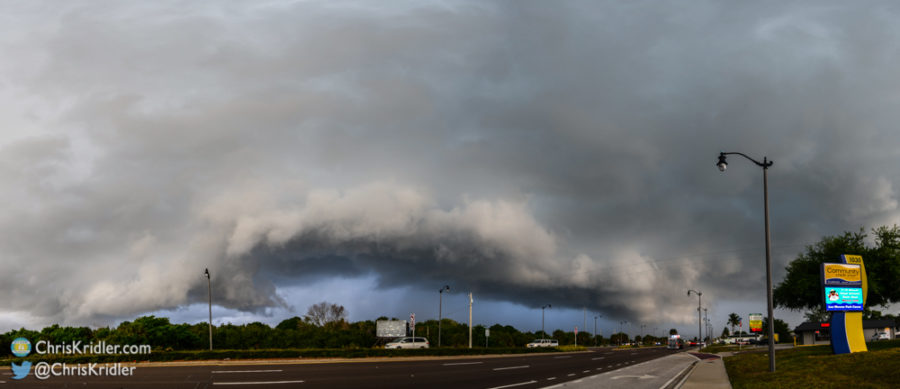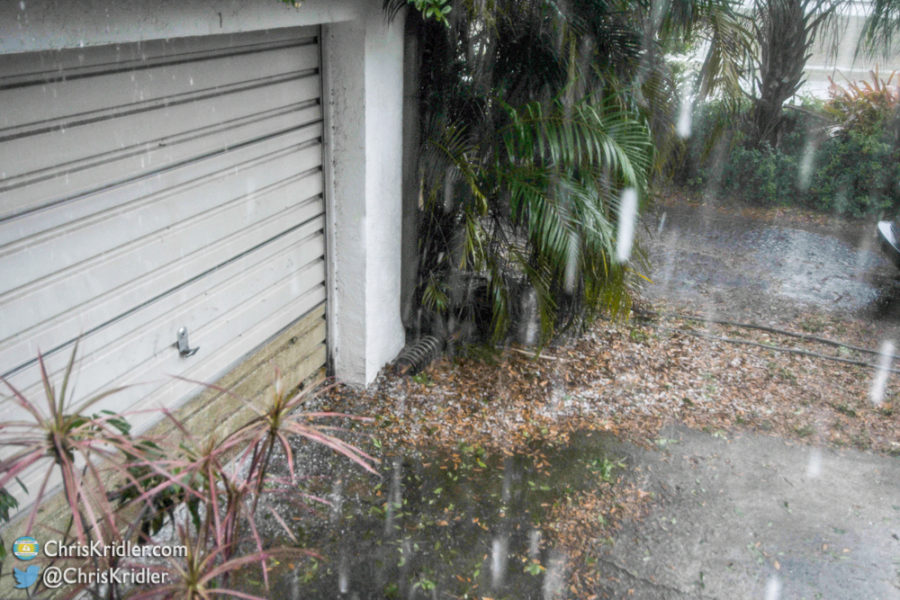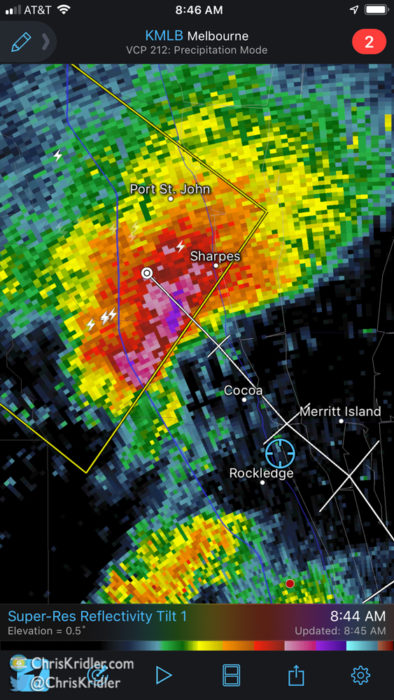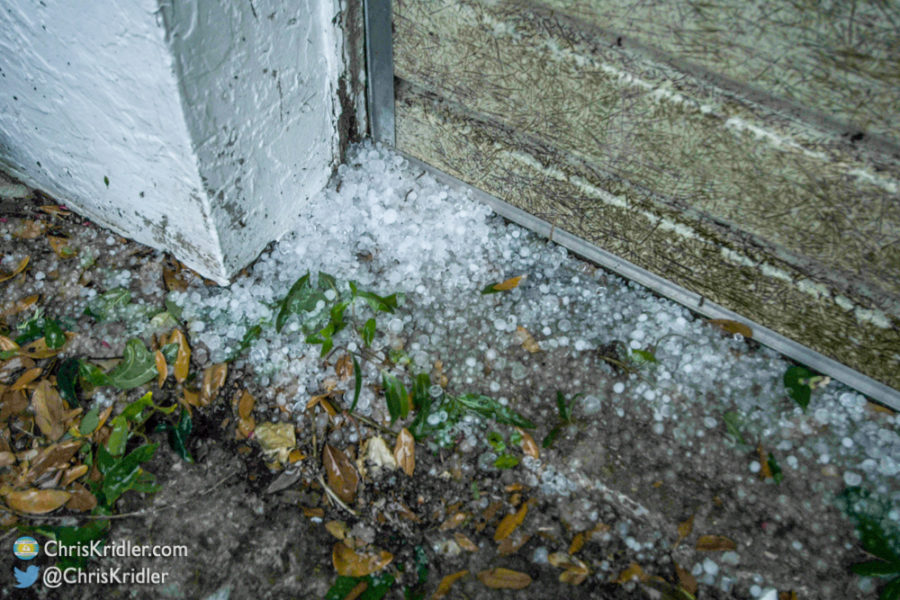Chris Kridler
Chris Kridler is a writer, photographer and storm chaser and author of the Storm Seekers Series of storm-chasing adventures.
Chris Kridler is a writer, photographer and storm chaser and author of the Storm Seekers Series of storm-chasing adventures.
Honeybees retire in the evening, so I’m not a hundred percent sure if those were the bees so excited about the pollen in the bloom I captured on video. The flower begins to open right at sunset, so there was still some light in the sky. I’d never seen anything like it in my time-lapses from previous years, and it was really amazing! Once it got dark, the bees went home, and the flower finished opening, still covered with ants and other insects.
May 18 was one of those chase days that was pleasantly low-pressure. Alethea Kontis and I chased with old friends, and we didn’t find any tornadoes, just beautiful storms from Alva to Enid, Oklahoma, culminating in amazing sunset colors in the turbulent clouds.
The time-lapse video is hypnotic, and I was delighted with the photo opportunities on the beautiful farm road where we wrapped up the chase as golds, oranges and blues roiled through the clouds.
Today was the first real chase day for Alethea Kontis and me in 2019. We’d driven out from Florida a couple of days before. It was Alethea’s second year of storm chasing, and she hadn’t seen a tornado yet. This day would deliver a beautiful one near McCook, Nebraska, that we saw from just south of Culbertson. At times it had a “Wizard of Oz” appearance. We met up with more chaser friends, and later that night, we saw a gorgeous lightning show from Lexington, Nebraska.
We drove about 450 miles this day – some of which was a large and frustrating circle. Pretty much par for the course on a storm chase.
Roll over the gallery images for more information about each photo, and click on a photo to see larger images.

This multi-image panorama shows precipitation behind the leading edge of the cloud as it moves into Rockledge.

The rain and hail came down hard, and water pooled in the yard.

Radar shows the purple indicating hail as the severe storm moved through Brevard County.
A morning hailstorm on March 27, 2019, took Florida’s Space Coast by surprise. I saw it coming and got a few shots from U.S. 1 in Rockledge before it clobbered our neighborhood and went on to do even more damage on the beaches.
Two-inch hailstones fell in Indialantic, taking out car and house windows and damaging roofs and stucco. The biggest stones I saw at our house in Rockledge were one-inch-plus, right as the onslaught began. Unfortunately, we also had so much rain – especially since another hailstorm followed the first one – that a little water got into the house.

Hailstones amid the leaves.

I saw hail just over an inch at our house, but most of it was smaller, like this.
Time equals money, especially for authors who become indie publishers. That equation becomes all too real when you hire an editor, designer, formatter or author assistant.
Sometimes you pay for time explicitly — for instance, you’ll pay an assistant to work ten hours a month to do everything from social media to dealing with distributors. Sometimes you pay a flat fee for a service based on word count or complexity. But when you go beyond the scope of that fee, your hired expert may charge you by the hour.
Efficiency and planning are the best ways to meet your budget. Here are five ways to keep costs from spiraling out of control.

Plan ahead so that outsourcing your indie publishing tasks doesn’t get overwhelming and expensive.
It’s easy to say “I just want to write” and give up every other task to an expert you hire, but that choice can also be expensive. If you are publishing as an indie, take a little time and read some of the many, many free sources of information online. Listen to relevant podcasts. Or buy a book, such David Gaughran’s Let’s Get Digital, and learn some of the basics for yourself. That way, you can speak intelligently with the person you hire to help you, and you’ll have an idea of what to ask for.
Just some of the questions you’ll want to answer before hiring someone: Do you want a paperback as well as an ebook? What genre is your book? What publishers/distributors do you want to use? Do you want to buy ISBNs or use free ones? (There are good posts online that can help you decide all of these things. Google is your friend.)
Make sure you understand what you are getting from your expert help and that it is what you want. You may or may not have a written contract; an email can be the equivalent of a handshake.
Ask questions. Will this editor provide the editing that you need? Will your editor go back and edit your post-edit revisions, too? Is your formatter willing to do a handful of reasonable corrections at no charge after you’ve seen the formatted product? Either way, endless revisions are probably not going to be covered in the initial cost.
If you’re hiring an assistant, how much do you want them to do? Social media? Graphics? Metadata? Marketing? Quantify your expectations and make sure they can meet them in the time allotted.
Also think about what you can do yourself. While many of these tasks have a learning curve or require a level of expertise, some — like uploading your book to various distributor sites — are not as hard as you might think. Social media can benefit from a personal touch. You can retain control, look for opportunities and save money if you do some things yourself.
There’s a reasonable expectation of getting a book back from an editor or a formatter in a week or two, especially if you have scheduled those services in advance. But if you rush into any aspect of publishing, you are likely to forget things, change your mind, or otherwise require changes after they’ve done all the work. Changes mean more time. Time means more money.
Take your time and do each step well. For instance, if you ask for a cover design without knowing your final trim size (print book dimensions) or change the title or back-cover copy, the cover designer will have to redo the cover. Cover changes are rarely simple.
In the same vein, editing a book once it’s formatted can be especially time-consuming/expensive if you have a lot of graphical elements, photos, featured quotes, or anything that makes pagination more challenging. Just deleting one sentence can change the layout of a complex book. Changes aren’t as easy as they are in a word processor, so they may take more time than you think. Besides, every time you touch an edited manuscript, you run the risk of introducing more errors.
You may end up paying double or triple for these services because they have to be repeated. A formatter may be willing to do small corrections as part of the original fee, but your rewrites should be over at that stage.
This point is a corollary to “Don’t rush.” You should not ask for a formatted copy of your book when you haven’t completed revisions or edits. You may have a front cover in the works during editing, but you should not have your print cover (i.e. with back and spine) created before you know all of the points listed below. Otherwise, your hired help will end up doing the same work over and over again and will charge you for that time.
In addition, your expert helpers are busy. They have other projects on their schedule and other clients who have booked their time. They may not have time to completely reedit or reformat your book with every change you want to make immediately. You will face unexpected delays as well as costs.
Here’s a reasonable sequence of events when you publish:
In parallel, you may have a designer working on a cover, but you should:
If your formatter is also your cover designer, then a lot of this communication will be easier. You may outsource some of these steps, but if you do, include deadlines in your plans so you have everything done in sequence.

If you’ve planned well, you will have scheduled all of these steps and allowed a little time for the unexpected. Maybe you’ve put your book on preorder and you have to meet that deadline, so building in a little extra time for life, glitches and hurricanes isn’t a bad idea. Plus you’ll want to allow time to build buzz and market your book before publication. Publishing is not instantaneous; sometimes it takes a while for a book to hit stores even after you hit “publish.” Allow enough time and be patient.
You want your book to be perfect. I know the feeling. It’s important to be meticulous and publish a great product, but at some point, you have to let it go. You have to stop making revisions and publish the book, especially if you’ve done your due diligence and reached the formatting stage. Worst-case scenario: You make changes later. The beauty of indie publishing is you can go into a book and change a word or two — this is fairly easy with ebooks — and hit “publish” again if you must. (Perfection is still desirable; with print, more steps are involved in re-publishing, and if you are publishing with, say, IngramSpark, every change costs you money. Yes, more money.)
If you plan ahead and allow yourself enough time to complete each task properly, you can publish with confidence — and without breaking the bank.
Chris Kridler is a writer and editor who specialized in copy editing in journalism school and went on to have a career in newspapers. Now she writes books and works with other authors, when she’s not shooting photos and chasing storms. Learn more at SharpEditor.com.
Illustrations licensed from DepositPhotos.

It was time to retire the old book covers, though I still like the look in their eyes!
I’ve been designing covers for other authors and decided it was time to give some attention to my original trilogy. Using photos I took while chasing storms and a couple of smaller licensed elements, as well as the magic of Photoshop, I created illustrations for the covers that I hope will convey the excitement I still feel when I think about these stories.
I like romance in my adventures and interesting characters who grow (it takes Jack three books to complete the journey from cad to hero). I love action and, of course, the thrill of seeing a supercell come together and produce a tornado. Add elements of a science thriller and some kick-ass women as heroines, and you have the Storm Seekers Series. The first three books are also available in a virtual boxed set. I say “the first three” because I am contemplating more. In the meantime, I’ve been writing romances under a pen name. More on those later.
The new covers are percolating through the online bookstores.
Want to chase some storms? Check out the books on Amazon or learn more and get links to other stores here.

A night-blooming cereus blossom. ©2018 by Chris Kridler
Check out the latest video below.
To see further (past) attempts at capturing these blooms, you can check out my YouTube channel.
Alethea Kontis and I targeted southwest Kansas near the Colorado border for our first Tornado Alley chase of the 2018 season. Despite a brief foray into Colorado, we ended up chasing pretty cells from Kansas into the Oklahoma panhandle. We saw multiple funnels but nothing close to a tornado. It was mostly a rainbow chase, but a pretty one. And we got to see Dorothy’s House, straight from Oz.
Roll over the thumbnails to see the captions, or click on an image to start a slide show of larger photos.

This storm in New Mexico on May 22, 2017, put on a spectacular sunset show. Photo by Chris Kridler, ChrisKridler.com, SkyDiary.com
March 20 brought severe storms to Florida, so my friend Alethea Kontis and I headed out for a shakedown cruise of my new storm-chasing data setup. Unfortunately, we were chasing in the Orlando area, so we saw a lot more red lights, strip malls and trees than we did storms – but we did get a nice view of a tornado-warned cell on the west side of Orlando. See photos from the chase here.
In the meantime, I’ve added a chase report to the 2017 files here. On May 22 of last year, I chased in New Mexico. The day ended with a gorgeous storm that is much better to describe in photos, not words.
Not long until May – and another chase in Tornado Alley! Stay tuned.
